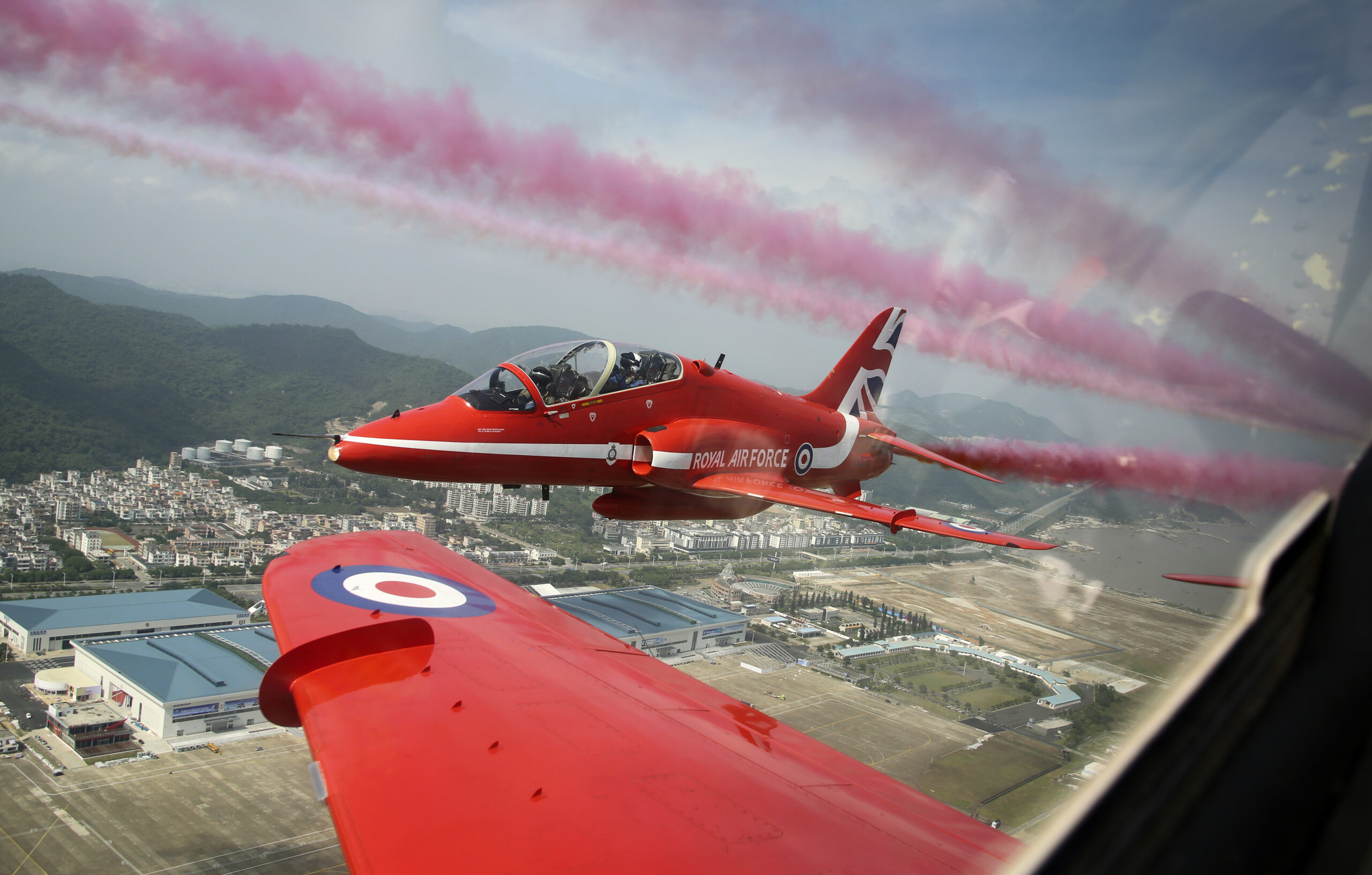
Last week Downing Street was graced by a machine etched into the psyche of anyone who has ever attended a British air show; that of a Red Arrow. The British made Hawk aircraft donned in Union Jack red, white, and blue took its place outside Number 10 Downing Street to celebrate the centenary year of the RAF.
RAF100
Throughout 2018 celebrations of the RAF100 will be occurring all over the country, and you can find out more about them here. These celebrations evoke not only memories of the great achievements of our RAF over the century, but also thoughts of what is to come and what the next 100 years have in store. The fact the Hawk was parked outside the most powerful door in the UK also raises an interesting question; what importance does public exposure have for the RAF?
Public Engagement
To cut to the point; capability generation, operation of that capability, and the way military effects are delivered are changing, just look at the use of unmanned aerial vehicles (UAVs) such as Predator for an example. Yet the public and political image of ‘Defence’ remains very much rooted in images of large hardware rolling over hills and the oft-used boots on the ground in ‘dusty places’ analogy. Public support for the military is a vital part of our national security; and a certain level of understanding and appreciation for the changing nature of technology, delivery of military effects, and the strategic context are very important.
ADS hopes to see, and is working with the MoD to bring elements of this understanding into the Combat Air Strategy. Providing technology roadmaps and a strong vision for international partnerships are fundamentally important parts of such a strategy. However, it is also a responsibility of MoD and industry to fill the strategy and ongoing work with a vision of how these future capabilities become part of the UK as a nation.
The image of Typhoon, Tornado (and this writer’s particular favourite the Harrier) flying over the British countryside are evocative images for the British public, and the Combat Air Strategy should have this in mind too. A strategy that aims to guide capabilities that will be in service in 30+ years’ time must consider what the nation will look like then too. What will the population’s relationship with the RAF (and wider armed forces) be in 2050? Might it be closer to that of the relationship with the NHS, for example? Will global events help or hinder society’s familiarity with our armed forces?
Future Workforce
Images like this do more than just provide great photographs; they inspire the school-age engineers of the future to study STEM subjects, they encourage university graduates to start businesses that generate innovative technologies, and they help the public picture in their mind what the RAF looks like in the future. These are important facets of a strategy that will require a national approach to deliver; from adjacent technology sectors to higher education engagement.
With the Farnborough Air Show fast approaching and the Combat Air Strategy due for publication around that time this summer is an exciting time for the UK’s military air community. It is MoD and industry’s responsibility to maintain this momentum, and bring the dynamism and energy already put into this work, to the wider public. Just remember to move any Red Arrows before the Foreign Secretary tries to sit in them…..





